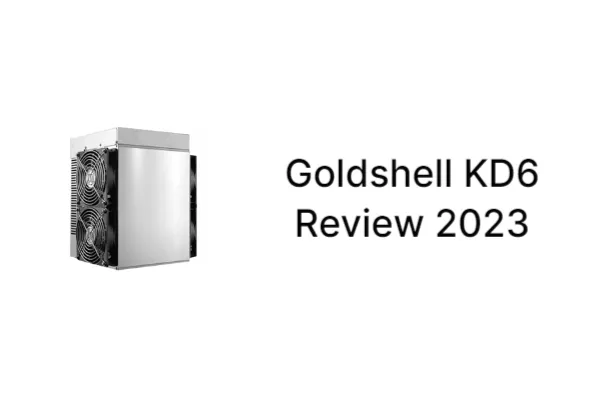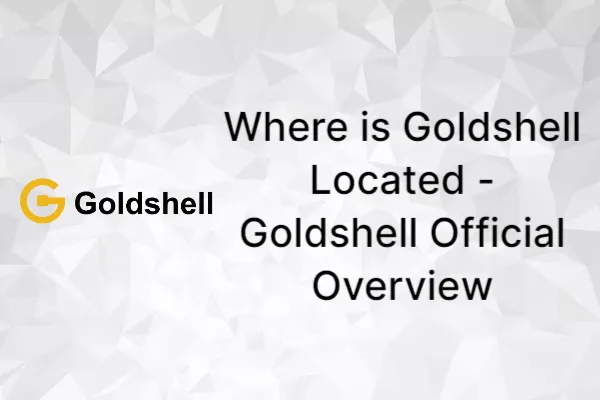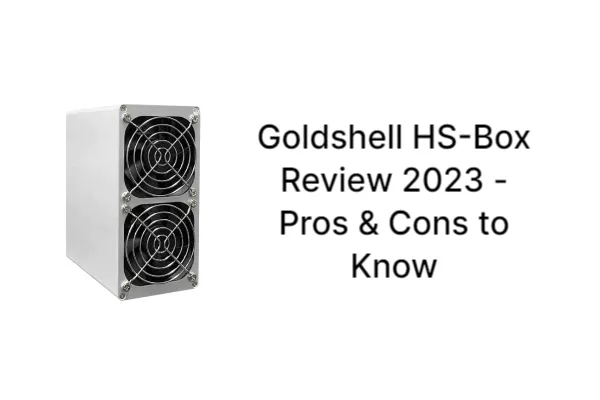In this article, we’ll outline the coins you can mine with the Goldshell Mini-DOGE and detail the characteristics of the most well-known coins.
Today we are going to talk about another Goldshell miner, Goldshell Mini-DOGE.After establishing itself, the Goldshell Mini-DOGE can mine LTC and DOGE simultaneously using the auxiliary workload verification mechanism (AuxPoW). Goldshell Mini-DOGE additionally supports all cryptocurrencies using the Scrypt algorithm. As a result, you can also include the following initiatives: Florincoin (FLO), Auroracoin (AUR), Gulden (NLG), GameCredits (Game), Emerald (EMD), Einsteinium (EMC2), and numerous others. The ten coins that can currently be mined with this mining device are examined in more detail below.
The prices of all cryptocurrencies mentioned in the article are indicated as of Feb 13, 2023
Mining Algorithm of Goldshell Mini-DOGE
The Goldshell Mini-DOGE is a Litecoin and Dogecoin merge miner (it can mine both coins at the same time). It mines the Scrypt algorithm, with a maximum hashrate of 185 Mh/s and power consumption of 233 W.
What is Scrypt?
Scrypt was one of the first hashing algorithms used on blockchain networks. It is an effort to improve the SHA-256 hashing algorithm, which was previously employed.
Password-based Key Derivation Function
The term “Scrypt” refers to a key derivation function (KDF) that employs a password. By employing a pseudorandom function, KDFs are hash functions that are used in cryptography to create one or more secret keys from secret values such as master keys, passwords, or passphrases. Generally speaking, KDFs are successful in thwarting attempts to guess passwords by brute force.
But before Scrypt, KDFs like Password-Based Key Derivation Function 2 (PBKDF2) could only partially defeat FPGAs and ASICs. PBKDF2 and other password-based KDFs required a lot of computation, despite not being memory-intensive. Scrypt was designed to be computationally expensive and memory-intensive.
ASIC Resistance
ASIC mining rig dominance, which led to the centralization of cryptocurrency mining, was combated by the development of Scrypt. The Bitcoin network and other Proof of Work networks that support virtual currencies use SHA-256; Scrypt is an upgrade for the blockchain that is compatible with these networks.
Due to Scrypt’s design, miners must generate random numbers quickly. The processor’s Random Access Memory (RAM), which must be continuously accessed before submitting a result, must be used to store these figures. Scrypt networks frequently have much lower hash rates than SHA-256 networks. For instance, as of the writing, Litecoin (LTC) has a hash rate of about 138 TH/s. Bitcoin is hashed using an estimated 93,000,000 TH/s.
Origins of Scrypt
The Scrypt algorithm was developed to strengthen network security against attacks that make use of specialized hardware. In contrast to other hashing algorithms like Equihash and CryptoNight, which were developed specifically for Proof of Work blockchains, Scrypt was first developed for another use case and later implemented on blockchain networks.
Prominent Projects That Use Scrypt Algorithm
Litecoin (LTC), Dogecoin (DOGE), and Einsteinium (EMC2) are three well-known projects that utilize Scrypt. This section will look at how Scrypt is used by each of these networks and how well it protects network security. We’ll also look at a few applications that once used Scrypt but have since switched to different hashing algorithms.
Advantages and Applications of Scrypt
- less complicated than other mining algorithms.
- significantly less energy is used than with other algorithms like SHA-256.
- Scrypt coins generally require lower fees for transactions on their blockchains
- Scrypt mining is four times quicker than Bitcoin mining.
- Fantastic method for encrypting files, wallets, and passwords.
Popular Coins That You Can Mime With Goldshell Mini-DOGE
Dual mining software called Goldshell Mini-LTC and DOGE is available. As long as the crypto is based on the Scrypt algorithm, you can earn a decent return from mining with the Goldshell Mini-DOGE.
The following coins can be mined for respectable rewards using the Goldshell Mini-DOGE.


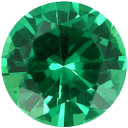
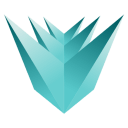

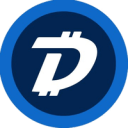
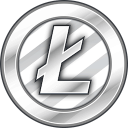
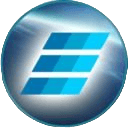


Dogecoin (DOGE)

Price: $0.0842
Market cap: $11,170,773,329
One of the most profitable coins to mine with Goldshell Mini-DOGE is Dogecoin. Dogecoin (DOGE) is based on the popular “doge” The logo of this internet meme features a Shiba Inu. The open-source digital currency was created by Sydney, Australia native Jackson Palmer and Portland, Oregon resident Billy Markus in December 2013, when they forked Litecoin. Given that Dogecoin was based on a dog meme, its creators believed that it would be humorous and lighthearted, and appeal to people outside of the core Bitcoin audience. Elon Musk, the CEO of Tesla, frequently mentioned Dogecoin on social media.
How Do You Mine Dogecoin?
One of the ways Dogecoin’s proof-of-work protocol differs from Bitcoin’s is through the use of Scrypt technology. It is also possible to mine an unlimited number of Dogecoins because the alternative coin has a one-minute block time and an unlimited total supply. A mining pool can be used to mine Dogecoin or you can mine it independently. Doge can be mined on these operating systems using a GPU and Windows, Mac, or Linux. Dogecoin and Litecoin mining have been combined since 2014, allowing for simultaneous mining of both coins.
What Can Dogecoin Be Used For?
On Twitter and Reddit, Dogecoin has primarily been used as a tipping system to reward the creation or sharing of high-quality content. Dogecoin can be obtained from a Dogecoin faucet or earned by taking part in a community that accepts the digital money. A website known as a “Dogecoin faucet” will provide you with a small amount of free Use Dogecoin as a beginner cryptocurrency so that you can engage in Dogecoin communities.
Litecoin (LTC)

Price: $92.79
Market cap: $6,705,587,315
Litecoin (LTC) is a cryptocurrency that was developed to provide quick, secure, and affordable payments by utilizing the unique properties of blockchain technology.
For more information about this project, see our in-depth analysis of Litecoin.
The cryptocurrency was created using the Bitcoin (BTC) protocol, but it differs from Bitcoin (BTC) in a few ways. These differences include the hard cap, the processing times for blocks of transactions, and the hashing algorithm used. With a block time of only 2.5 minutes and extremely low transaction fees, Litecoin is well suited for use in point-of-sale payments as well as microtransactions.
Litecoin was made accessible on October 1 through an open-source client on GitHub. 7, 2011, and the The Litecoin Network went live on October 2—five days after that. 13, 2011. Since then, its adoption by businesses has grown dramatically, and for the majority of its existence, it has consistently ranked among the top ten cryptocurrencies by market capitalization.
The cryptocurrency was created by Charlie Lee, a former Google employee, who intended Litecoin to be a “lite version of Bitcoin,” in that it features many of the same properties as Bitcoin, despite being lighter.
The Mini-DOGE currently mines 0.0019 LTC a day.
DigiByte (DGB)

Price: $0.009816
Market cap: $156,972,645
DigiByte (DGB) is a blockchain and asset creation platform that is open source. Development of this Bitcoin (BTC) fork began in October 2013, and the DGB token’s genesis block was mined in January 2014.
The public blockchain and cryptocurrency DigiByte are well-known. It was created to improve the Bitcoin blockchain’s capacity, transaction speed, and security.
DigiByte consists of three layers: a smart contract “App Store,” a public ledger and the core protocol featuring nodes communicating to relay transactions.
Gulden(NLG)

Price: $0.002206
Market cap: $1.24 M
Gulden is a platform for digital assets that aims to provide Users registered with the Dutch National Bank (DNB) with a secure and safe trading environment. The Gulden blockchain network, which has a low energy requirement, aims to be among the safest decentralized networks in the world. Additionally, Gulden claims to have a thriving community that makes sure that all user questions are promptly addressed.
According to its whitepaper, the platform aims to address issues like double-spend, selfish mining, 51 percent attacks, centralization, and more that are frequently encountered with blockchain networks. Selfish mining is when a miner delays broadcasting a solved block because they want to begin mining another one. The same is true of Gulden, a project that aims to address problems like transaction capacity limitations and blockchain stalling brought on by an unexpected lack of miners or new blocks.
Gulden claims that a variety of techniques, such as alternative algorithms, Proof-of-Stake (PoS), hybrid consensus techniques, algorithms for difficulty adjustment, etc., were used to get around blockchain’s limitations., have failed. Because of this, the platform aims to implement an improvised Proof-of-Work (PoW2) consensus mechanism on the network. PoW2 was developed to prevent 5 percent attacks. The platform also intends to implement a 0-conf solution, a two-layer network that would enable quick block confirmations when required.
The Gulden platform’s native cryptocurrency is NLG. The token is produced by a cutting-edge mining method that requires witnesses to confirm and validate each block produced. Therefore, the miner must share the block in order to prevent a loss. This guarantees that all miners adhere to the rules, claims the network.
Verge (XVG)

Price: $0.003092
Market cap: $51,063,648
Verge is a cryptocurrency and blockchain that puts privacy first and seeks to outperform the original Bitcoin (BTC) blockchain by offering a quick, efficient, decentralized payments network. Additionally, it has privacy features like the capability to send payments to stealth addresses and the integration of the Tor network into its wallet, vergePay.
The initiative takes pride in being open source, claims to be driven by the community, and is dependent on volunteers.
A fork of Peercoin (PPC) called DogeCoinDark saw its initial release in October 2014. In order to reach a wider audience and distinguish itself from Dogecoin (DOGE), with which it has no direct affiliation, it was rebranded as Verge in February 2016. The project has been developed on top of the Bitcoin source code.
GameCredits (Game)

Price: $0.01709
Market cap: $3,088,775
GAME Credits, an ERC-20 cryptocurrency, run on the Ethereum network as their operating system. This particular asset is the first cryptocurrency to concentrate solely on gaming and transform in-game purchases. A decentralized metaverse game is currently being developed by the platform in collaboration with a creator community. The term “metaverse” refers to a vast virtual environment with enormous social and financial potential, where the use of blockchain enables the exchange of virtual goods for money with actual market value. The network also uses smart contracts and application programming interfaces (APIs) to deliver a multi-utility platform.
The whitepaper claims that in the past, players and the conventional gaming industry could trade in-game goods. The main problem was that players could only trade these items until the game’s designers gave their approval. Players could not use these resources if the project’s creators decided to end it. GAME Credits aims to solve this issue by utilizing the advantages of blockchain, cryptocurrencies, and non-fungible tokens (NFTs). In order to make the GAME enjoyable for both players and developers, this platform fully controls in-game resources through NFTs. Players can now exchange in-game items across the network using smart contracts and GAME Credits in the form of NFTs.
An assortment of gaming tools using blockchain technology are part of the asset. A few features include the GAME Tournament Organizer, GAME Reward System, GAME Exchange, and GAME Foundry NFT creator tool. The platform also aims to enable game developers to operate effectively even if they have no prior experience with blockchain technology. Developers can create NFTs to receive commissions on GAME Foundry.
The token has the ticker GAME. Participants in GAME Credits can create, trade, and transfer digital in-game assets using these tokens. Players and communities can use these tokens to take part in or organize GAME tournaments. . and;;;;;;;;;;;;;;;;;;;;;;;;;;;;;;;;;
Emerald (EMD)

Price: $ 0.0036309
Market cap: $ 69,413.02
Emerald is a cryptocurrency wallet and payment infrastructure that focuses on non-custodial security and is fault-tolerant, unstoppable, and decentralized.
Einsteinium (EMC2)

Price: $0.00852
Market cap: $1,949,436
Blockchain technology is used by the community-driven cryptocurrency Einsteinium (EMC2) to raise funds for academic research.
This is accomplished by levying a mining tax, which results in the establishment of a fund from which grants can be given to deserving applicants. Mining blocks must contribute 2.5% of their value to the Einsteinium Foundation’s fund, and the community will vote on which scientific project to support. Incorporating crowdfunding into the process, The Einsteinium Foundation is attempting to raise awareness of a number of projects and causes. The Foundation is said to have already donated 16 million EMC2 coins to scientific endeavors.
With a 50% block reduction and a 60 second block time, the EMC2 Scrypt coin democratizes mining by using the Kimoto gravity well. The EMC2 coin works with Windows, Android, and Mac wallets.
Florincoin (FLO)

Price: $0.002450
Market cap: $375,771
A cryptocurrency with quick transaction processing is Scrypt-minable FLO. The new feature introduced by Florincoin is transaction comments. With the help of these transaction comments, Florincoin is able to support a wide range of cutting-edge blockchain improvements and applications.
Auroracoin (AUR)

Price: $ 0.02665
Market cap: $ 399,674
On January 24, 2014, peer-to-peer cryptocurrency Auroracoin (AUR) was launched as an Icelandic alternative to bitcoin and the króna. The unnamed creator or creators premined half of the 21 million total coins for the 330,000 Icelandic citizens who reside in Iceland under the pseudonym Baldur Friggjar Óðinsson.
Phase I of this ground-breaking national ID-based airdrop with 31.8 Auroracoins for submitting a claimant received 31.8 Auroracoins per claimant received 31.8 auroracoins per claimant received 31.8 auroraco Phases II and III ended in 2015, with 318 and 636 Auroracoins per claimant, respectively.
40 percent of the 10.5 million premined coins were claimed, 10 percent were donated to the 50 percent of the Auroracoin Foundation (M1 fund) were undeniably destroyed. (AURburnAURburnAURburnAURburn7eS4Rf)
In 2016, there was a hard-fork to a multi-algorithm (PoW) code change. There was also a block-time change from 10 minutes to 61 seconds, a corresponding change in block-reward, resulting in a “halvening schedule” change and increase of maximum coins to 23.3 million. ( Adjusted to 17.97 million after 5.345 million burned )
In order to expand Auroracoin’s blockchain advocacy efforts in Iceland, it was decided to liquidate 80% of the M1 fund when the Icelandic Blockchain Foundation (Rafmyntaráð) was founded in 2018.
In 2021, Auroracoin made another significant major release, continued to be volunteer-driven, and made use of open-source technology with the goal of offering a substitute for fiat currencies that inflate.
These profitability projections should be treated with caution given how erratic cryptocurrency prices can be. It might increase, making mining even more profitable, or it might decrease, bringing about lower profits. The network difficulty has an impact on Goldshell Mini-DOGE mining profitability as well.
What is Cryptocurrency?
A cryptocurrency is a type of digital or virtual currency that uses cryptography as a security measure to thwart counterfeiting and double spending. Numerous cryptocurrencies are built on the blockchain technology. A dispersed network of computers keeps track of it as a distributed ledger.
Since cryptocurrencies are typically not issued by a central authority, governments theoretically cannot interfere with or manipulate them.
Key Takeaways
- On a network that is distributed across many computers, a specific class of digital asset known as cryptocurrencies is created. They are able to exist without the assistance of governments or other central institutions thanks to their decentralized structure.
- According to some experts, blockchain technology will have an impact on a wide range of industries, including finance and law.
- Cryptocurrencies provide decentralized systems that are not susceptible to failure at a single point, as well as cheaper and quicker money transfers.
- Some of their drawbacks include the unpredictable nature of cryptocurrency price changes, the energy-intensive mining process, and use in illegal activities.
Conclusion: the Goldshell Mini-DOGE is a Dual Miner of LTC Coin and DOGE Coin
You can mine Dogecoin (DOGE) and Litecoin (LTC) at the same time with Goldshell Mini-DOGE, It is used by DigiByte (DGB), Verge (XVG), Gulden (NLG), GameCredits (Game), Emerald (EMD), Einsteinium (EMC2), Florincoin (FLO), Auroracoin (AUR), and other Scrypt-based coins. Among which the most lucrative cryptocurrency are both Dogecoin and Litecoin.
FAQs
Which Miner is Best for Dogecoin?
Listed below are some of the best Dogecoin mining rig hardware:
- Goldshell LT5.
- Bitmain Antminer L3.
- Asilcon A6 LTC Master.
- Goldshell Mini DOGE.
- Bitmain Antminer L7.


